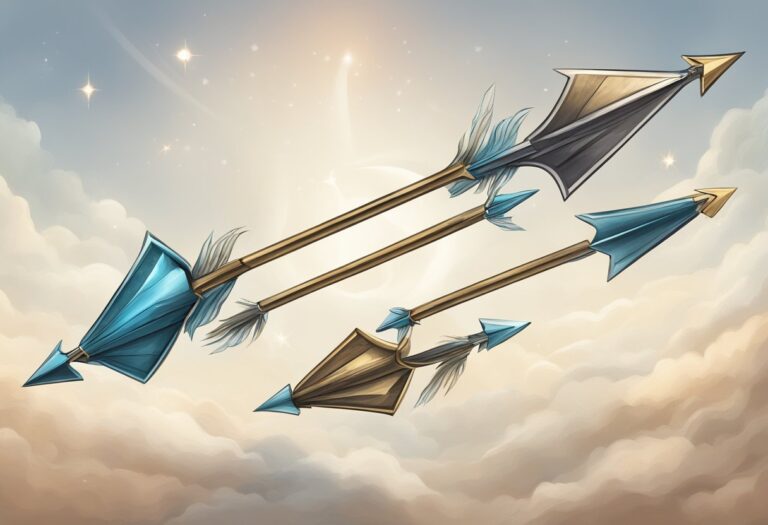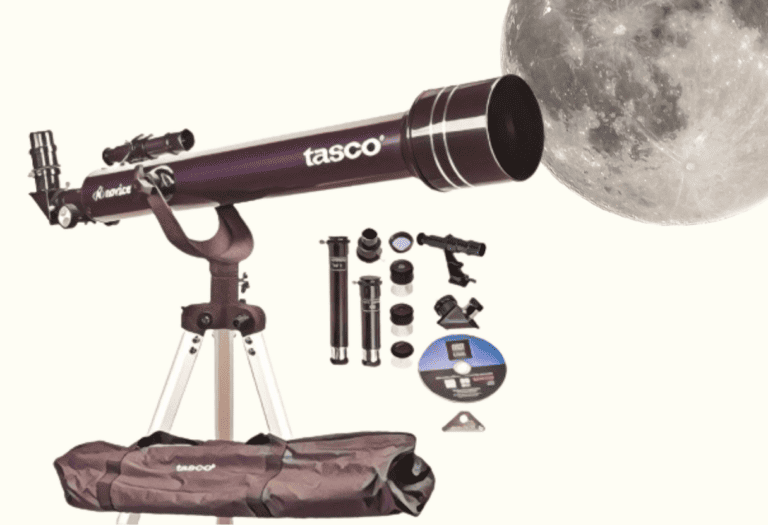Are you looking for the perfect telescope to launch your family’s journey into the cosmos?
Choosing the best telescope for kids, teenagers, and families is about finding that perfect mix of educational value, user-friendliness, and durability. It’s not just about bringing distant stars closer; it’s about sparking curiosity, fostering learning, and creating moments of wonder and bonding.
Well, we’ll be going over:
- What are the essential features of a kid-friendly telescope that combine simplicity with the capacity to captivate young minds?
- How do you balance the needs of different age groups within a family when choosing a telescope, ensuring it’s engaging for both kids and adults?
- What additional tools or accessories can enhance the educational and entertainment value of a telescope for family-oriented stargazing?
Embarking on an astronomical adventure with your family can be both enlightening and exhilarating.
Let’s dive in.
Top Telescopes for Young Astronomers
- ECOOPRO 70mm Telescope – Top Pick
- Gskyer Kids Telescope
- Stargazing Delight
- SOLOMARK Beginner Telescope
- MaxUSee Kids Telescope
In my search for the perfect stargazing tools for various ages and experience levels, I’ve identified a stellar selection of telescopes tailored for kids, teenagers, and families. Each model offers a balance of ease-of-use, educational value, and quality optics to make those celestial observations memorable and engaging. Whether you’re fostering a young child’s budding interest in astronomy or fueling a teenager’s growing passion for the cosmos, the following list is specifically curated to help you find the best fit for your aspiring astronomer’s skyward adventures.
ECOOPRO 70mm Telescope
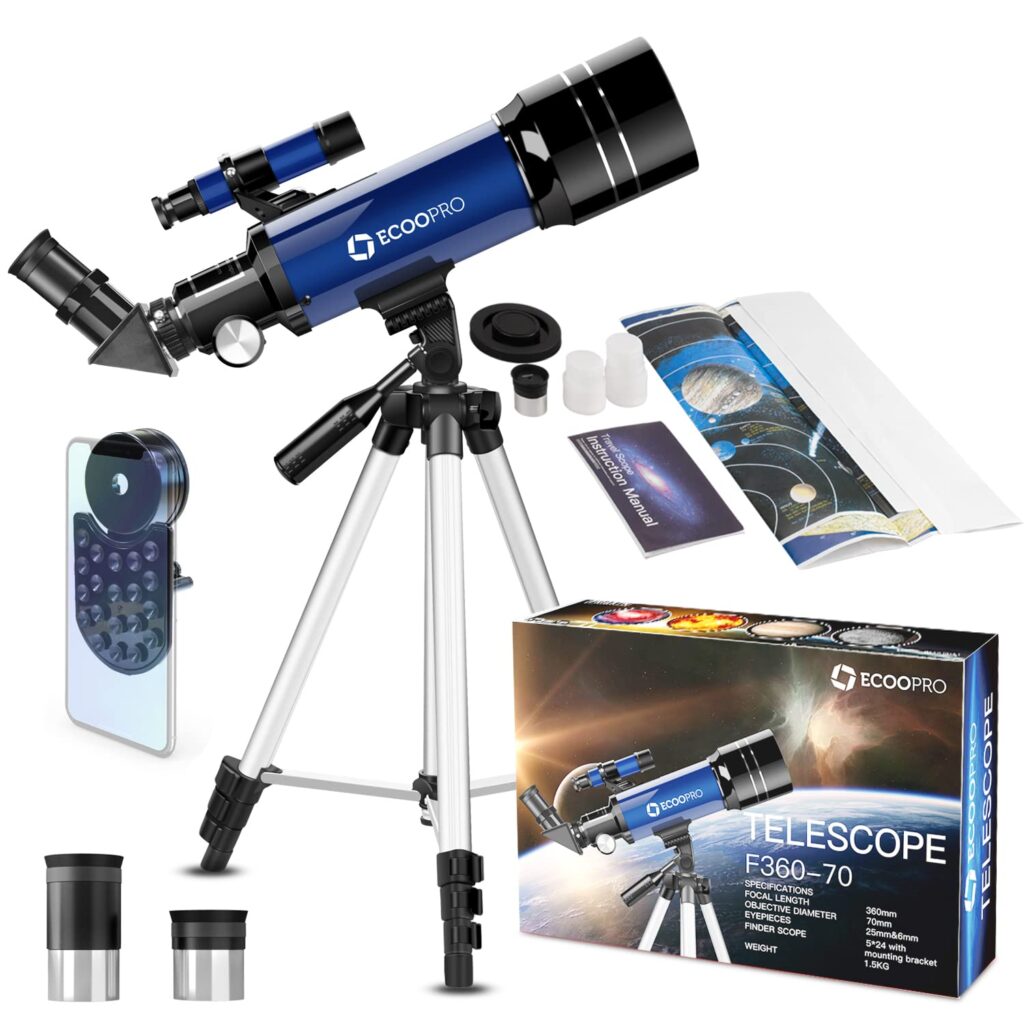
I found this telescope to be a splendid choice for families who want to introduce the wonders of astronomy to their kids without investing in a professional-grade setup.
Pros
Cons
When I first got my hands on the ECOOPRO 70mm Telescope, I was taken by how compact yet sturdy it felt. Setting it up was a breeze, which is a big plus when you’re trying to keep eager children interested. The clarity of the Moon’s craters during our nighttime observation was truly striking, which speaks volumes about the quality of the lens and the coatings.
The versatility of this telescope surprised me; it served equally well for bird watching during the day. The altazimuth mount provided a smooth and straightforward tracking system. As I shifted from lunar landscapes to birds in flight, the transition felt seamless.
Children have their moments of impatience, but with this telescope, there was hardly any time wasted. From taking it out of the box to exploring the heavens, the overall experience was user-friendly. I could easily imagine this telescope sparking a lifelong passion for the cosmos in both kids and adults alike.
Gskyer Kids Telescope
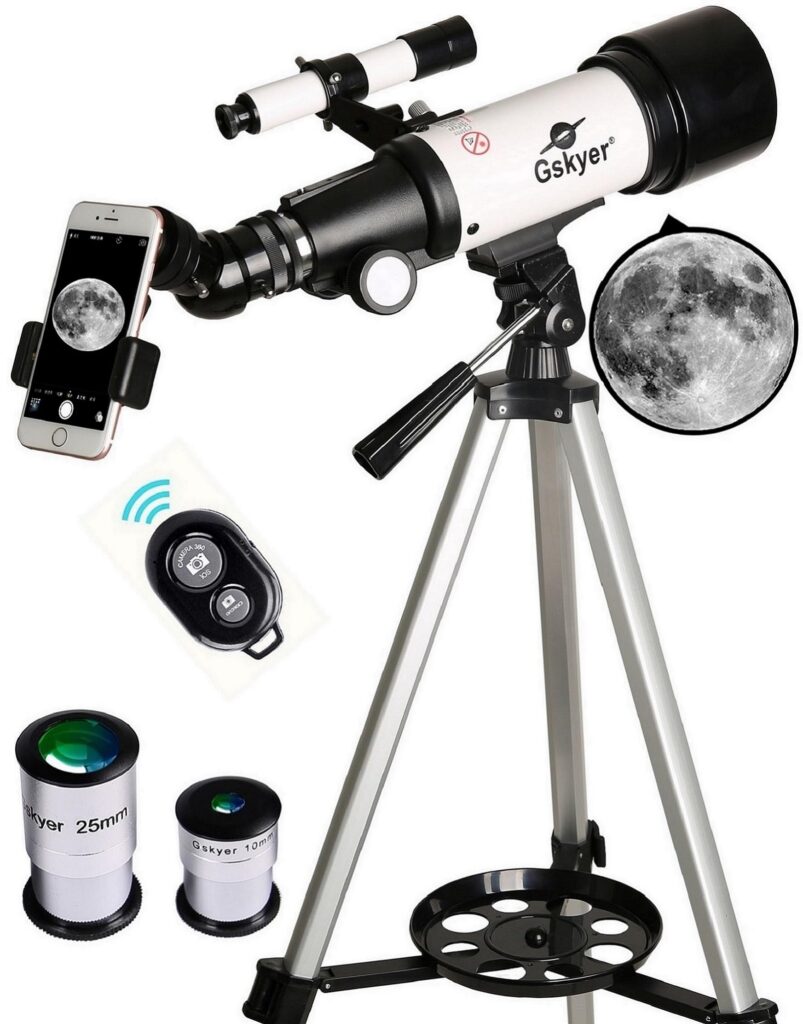
After a night under the stars with the Gskyer Telescope, I find it ideal for families embarking on their celestial journey.
Pros
Cons
Last night’s stargazing session with the Gskyer Kids Telescope was a delight. Its clear optics allowed for vibrant lunar views and with the additional eyepieces, focusing on the Moon’s craters felt like a hands-on science lesson. The Barlow lens added enough zoom to make distant planets more than just specks of light, bringing the rings of Saturn within sight.
The telescope feels sturdy, yet lightweight enough to move around the garden easily. Despite its simplicity—ideal for beginners—I’d suggest new users have a little patience setting it up initially. Once aligned, it passed from my hands to my nephew’s with seamless ease. He flipped quickly from observer to passionate young astronomer.
What impressed me was the inclusive package—the carry bag, adjustable tripod, and smartphone adapter expanded our experience horizon. We captured snapshots of the lunar surface, which was a hit with the whole family. It is admittedly not the high-end spectrum of stargazing equipment, but the perks for the price point are undeniable. For those starting out or seeking a family-friendly option, it’s genuinely hard to beat.
Stargazing Delight

After a thorough stargazing session, I believe this telescope strikes a fine balance between user-friendliness and impressive celestial views, suited for enthusiasts of all ages.
Pros
Cons
This telescope is a wonderful tool for families diving into astronomy. It’s lightweight and comes with a handy carrying bag, so taking it to varied locations was a breeze. Observing the moon’s craters in striking detail was nothing short of captivating, and becoming familiar with the sky’s offerings felt rewarding.
The two eyepieces and the additional Barlow lens provide various magnification options, which allowed me to view celestial objects both near and far. The excitement in a child’s voice when they spot the rings of Saturn for the first time is priceless, and this telescope delivers those moments consistently.
Including a wireless remote and the ability to connect a smartphone for celestial photography is a smart, modern touch. Although attaching some phone models was tricky, the pictures I captured of the moon’s surface were quite impressive. It’s a fun, interactive way for families to explore the cosmos together.
SOLOMARK Beginner Telescope
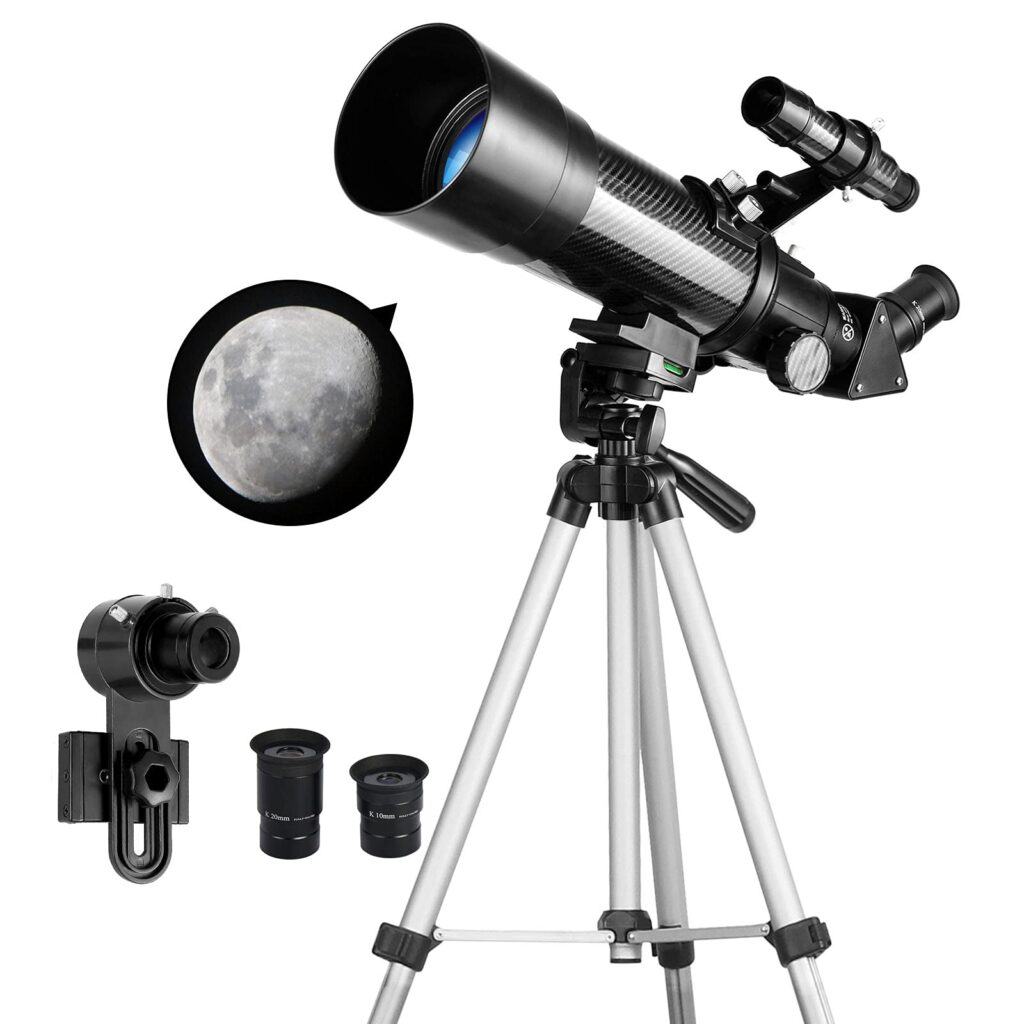
I found the SOLOMARK telescope to be a fitting choice for families wanting to explore the cosmos from their backyard.
Pros
Cons
Straight out of the box, this SOLOMARK telescope struck me as a user-friendly instrument tailor-made for beginners. The large aperture provided crisp views of the moon and planets, making those first forays into astronomy feel truly magical. The two eyepieces gave me a choice between wider sky surveys and more focused observations.
Tinkering with the telescope, I was pleased to find how easily I could align it using the finder scope, and the panhandle made it simple to track celestial objects as they marched across the night sky. I especially appreciated the adjustable tripod, which helped me find a comfortable viewing height whether I was seated or standing.
The smartphone adapter was a hit with the family. Taking pictures of the moon was straightforward, and sharing these captures on social media or with friends added an extra layer of enjoyment to our stargazing sessions. It was gratifying to watch my children’s awe as they glimpsed the craters and seas of the lunar surface up close.
A solid piece of equipment for the price, the SOLOMARK telescope comes with everything needed to get started in amateur astronomy. It’s a tool I can see us using often, on clear evenings or for solar observations with proper filters. Its beginner-friendly setup ensures that the entire family can take part in exploring the wonders of the night sky.
MaxUSee Kids Telescope
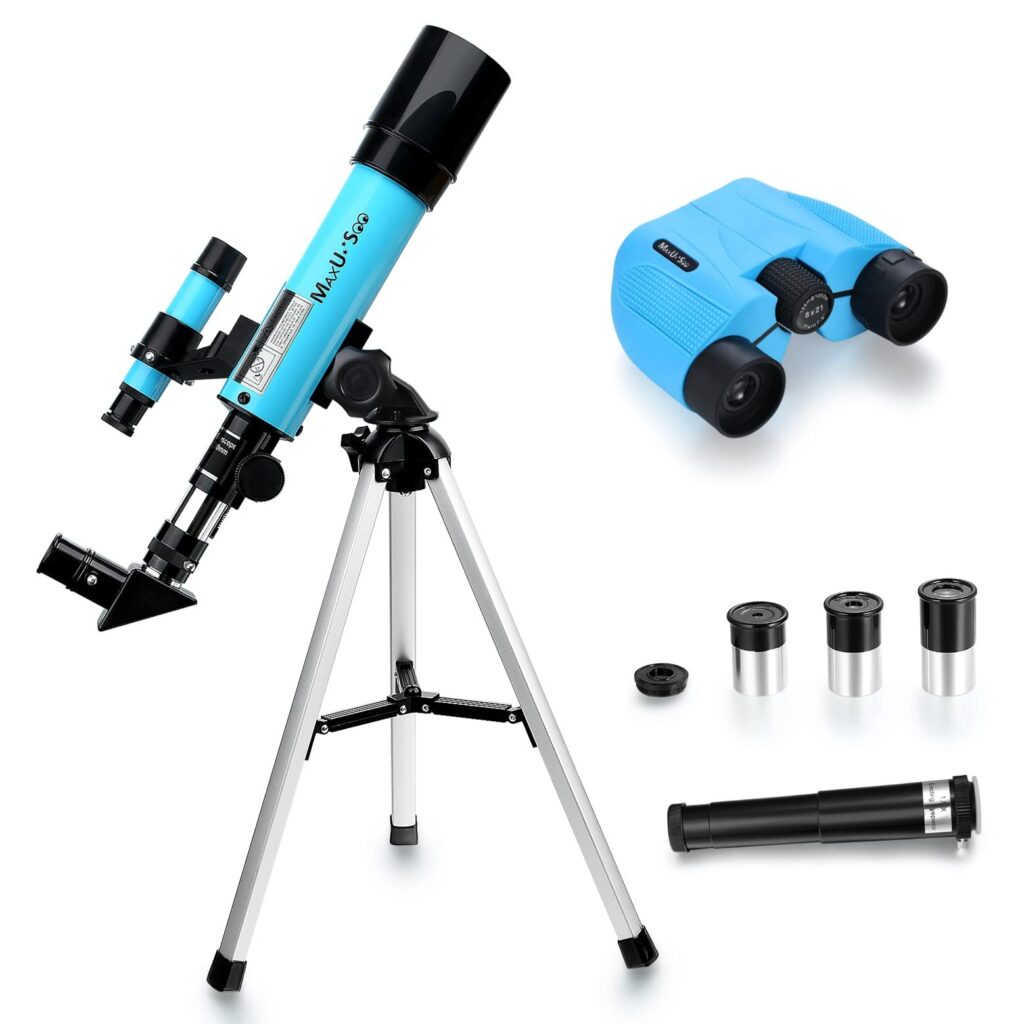
I believe the MaxUSee Kids Telescope is an excellent starting point for anyone interested in astronomy, providing good value and educational support for beginners.
Pros
Cons
Having spent some time with the MaxUSee Kids Telescope, my first impression highlights its ease of use and straightforward assembly process. It’s light enough to carry on family trips, and with its user-friendly features, I got to observe the moon’s craters with clarity that exceeded my expectations for a telescope designed for beginners and children.
The inclusion of assorted eyepieces is a huge plus, allowing the magnification to be varied to suit the celestial object in focus. Switching between the eyepieces was a breeze, and each provided a unique viewing scale, enriching the overall stargazing experience. The erecting eyepiece made daytime terrestrial viewing a delight as well, bringing distant scenes closer with surprising detail.
Not to be overlooked, the bundled compact HD binoculars added versatility to my viewing options. Whether I was bird watching during the day or locating objects before zooming in with the telescope at night, the clarity and ease of focus with these binoculars were commendable.
On the downside, the tripod provided with the telescope could benefit from more stability. Initially, aligning the telescope was a bit challenging, requiring a delicate touch to prevent it from toppling over. Furthermore, for those new to telescopes, the instructions were somewhat basic. A few times, I found myself relying on trial and error over guidance from the manual.
In conclusion, the MaxUSee Kids Telescope offers a solid foundation for those starting their journey into astronomy. With its practical features and additional binoculars, it sparked my curiosity and served as a gateway to explore the stars and beyond. Despite a few minor setbacks, it’s a choice worth considering for its educational value and overall quality.
Buying Guide
When I’m choosing a telescope for kids, teenagers, or family use, it’s important to prioritize ease of use, durability, and appropriate features that match the user’s age and interest level. Here’s a concise guide to help in the selection process:
Age Appropriateness
- Kids (Under 10): Simple, robust, and with a lower magnification.
- Teenagers (10-18): Slightly more complex with better optics for a more authentic experience.
- Family: Versatile to cater to different ages and skill levels, possibly with multiple eyepieces.
Key Features to Consider
- Aperture: Indicates the light-gathering capacity; a larger aperture offers clearer, brighter images.
- Magnification: High magnification isn’t always better; balance it with aperture.
- Mount Type: Stability is essential; a simple altazimuth mount for beginners or an equatorial mount for more experienced users.
- Ease of Use: Look for a user-friendly interface, particularly for children.
Durability and Portability
- Material: Durable materials that can withstand accidental bumps or drops.
- Size & Weight: Should be manageable for the intended user to transport and set up.
Budget
- Align features with the price you’re willing to pay; invest in quality over unnecessary features.
Remember, the best telescope is one that gets used often. So, my focus would be on a telescope that matches the user’s interest and enthusiasm, ensuring a rewarding stargazing experience.
Frequently Asked Questions
Choosing the right telescope can be challenging, so I’ve compiled essential information answering common questions to guide you in making an informed decision.
What are the key features to look for in a children’s telescope?
When selecting a telescope for children, it’s crucial to find one that is lightweight, easy to use, and has a sturdy mount. Opt for telescopes with a decent aperture size to ensure good light gathering — around 70mm to 90mm is typically sufficient.
How does age affect the choice of a telescope for children?
The age of a child influences the telescope’s complexity and size. Younger kids, around 5 to 8 years, may need a durable, user-friendly telescope, while teenagers might handle more complex models with higher magnification and advanced features.
What type of telescope is best for viewing planets for young astronomers?
For young astronomers interested in planet viewing, a refractor or a reflector telescope with a moderate to high aperture (at least 70mm for refractors and 114mm for reflectors) and a stable mount is ideal since these models provide clear, detailed images of celestial objects.
What should be considered when selecting a first telescope for a beginner, regardless of age?
Beginners of any age should look for a first telescope that combines simplicity with quality optics. A model with a sturdy mount, an aperture size between 70mm to 130mm, and low to moderate magnifications is usually a good start.
At what age can children start using a telescope?
Children can start observing with a telescope as young as 5 years old with appropriate supervision. However, the best age to start might be around 8 to 10 years old, when they can appreciate and operate a telescope with less assistance.
Which telescopes are recommended for families to enjoy astronomy together?
Families should look for telescopes that offer a good balance between ease of use and performance, such as the Celestron NexStar series or the Orion SkyQuest Dobsonian telescopes. These are user-friendly for all ages and provide excellent views of the night sky.




